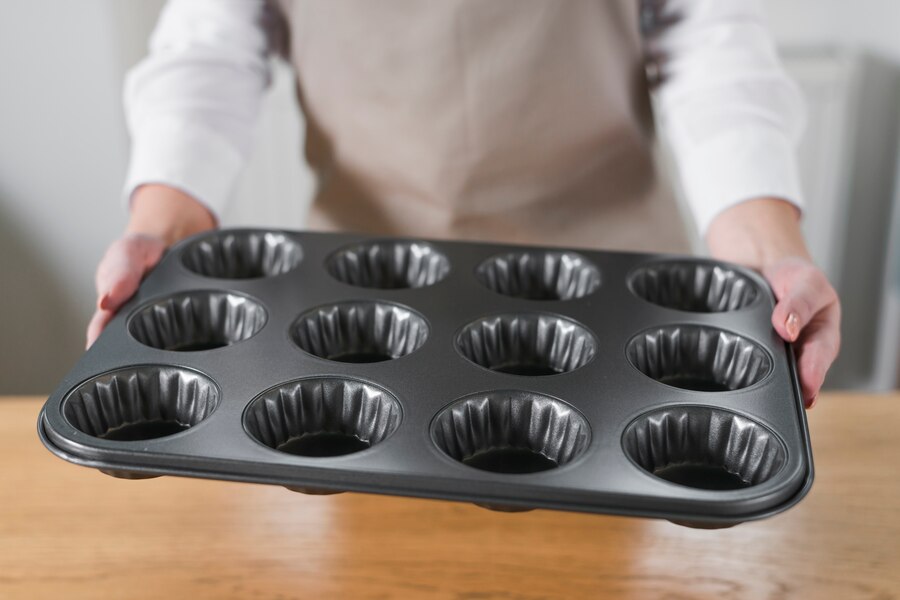In the world of baking, presentation is key. Whether it’s a simple homemade cake or an intricately designed masterpiece, the way it’s displayed can enhance its appeal. Among the array of tools available to bakers, the humble cake tray holds a special place. In this comprehensive guide, we’ll delve into the versatility, necessity, and various aspects of cake trays, exploring their importance in the realm of baking.
Understanding Cake Trays: What Are They?
Before we delve into the depths of cake trays, it’s essential to understand what they are. Cake trays, also known as cake boards or cake bases, are flat surfaces typically made of cardboard, plastic, or other sturdy materials. They provide a stable foundation for cakes during transport, display, and serving. Cake trays come in various shapes, sizes, and designs, catering to the diverse needs of bakers.
The Importance of Cake Trays
Stability and Support: One of the primary functions of a cake tray is to provide stability and support to the cake. As cakes can be heavy, especially multi-tiered ones, a sturdy base is crucial to prevent them from collapsing or tilting.
Transportation: Cake trays facilitate the safe transportation of cakes from one location to another. Whether it’s a short trip across town or a long journey for a special occasion, a secure base ensures that the cake remains intact and presentable upon arrival.
Display and Presentation: Presentation plays a significant role in the culinary world, and cake trays contribute to the overall aesthetic appeal of a cake. They provide a clean, elevated platform for showcasing the cake, making it more visually appealing to the audience.
Hygiene and Convenience: Cake trays offer a hygienic solution for serving cakes, especially in commercial settings such as bakeries or events. They can be easily disposed of after use, eliminating the need for cleaning and ensuring convenience for both the baker and the consumer.
Types of Cake Trays
Cardboard Cake Trays: These are the most common type of cake trays and are widely used in both home baking and commercial settings. Made of sturdy cardboard, they come in various shapes and sizes to accommodate different cake dimensions.
Plastic Cake Trays: Plastic cake tray are durable and reusable, making them a popular choice for professional bakers and caterers. They offer added stability and can withstand heavier cakes without bending or warping.
Decorative Cake Trays: For special occasions such as weddings, birthdays, or themed events, decorative cake trays add an extra layer of elegance to the presentation. These trays often feature intricate designs, patterns, or embellishments that complement the cake’s theme or decor.
Customized Cake Trays: Some bakeries and specialty stores offer customized cake tray tailored to specific requirements. Whether it’s a particular shape, size, or material, customized trays allow bakers to showcase their creativity and enhance the overall presentation of the cake.
Choosing the Right Cake Tray
When selecting a cake tray, several factors should be taken into consideration:
Size: The size of the cake tray should be proportional to the size of the cake. It should provide ample space for the cake to sit comfortably without any overhang.
Material: Consider the material of the cake tray based on the weight and type of cake you’ll be using. For heavier cakes, opt for sturdy materials like plastic or thick cardboard to ensure stability.
Design: Choose a cake tray design that complements the aesthetics of the cake. Whether it’s a simple, understated tray or a decorative one with intricate details, the design should enhance the overall presentation.
Purpose: Determine the intended use of the cake tray. If it’s for a one-time event, disposable cardboard trays may suffice. However, for repeated use or professional settings, investing in durable, reusable trays is recommended.
Tips for Using Cake Trays Effectively
Proper Handling: Always handle cake tray with care, especially when transporting cakes. Hold them from the bottom to provide maximum support and prevent any damage to the cake or tray.
Leveling: Ensure that the cake is level and centered on the tray to maintain stability and balance. Use a cake leveler or a long, serrated knife to trim any uneven edges before placing it on the tray.
Decoration: Take advantage of the cake tray’s surface to enhance the presentation of the cake further. Add decorative elements such as edible flowers, chocolate shavings, or frosting accents to create a visually stunning display.
Storage: Store cake tray in a cool, dry place away from direct sunlight to prevent warping or damage. If using plastic trays, stack them carefully to avoid scratching or denting.
Conclusion
In the realm of baking, cake tray serve as indispensable tools that contribute to the overall success of a cake. From providing stability and support to enhancing presentation and convenience, their importance cannot be overstated. By understanding the different types of cake tray, choosing the right one for your needs, and employing effective usage techniques, you can elevate your baking endeavors to new heights of excellence. So, the next time you embark on a baking adventure, remember the essential role that cake tray play in creating culinary masterpieces.







